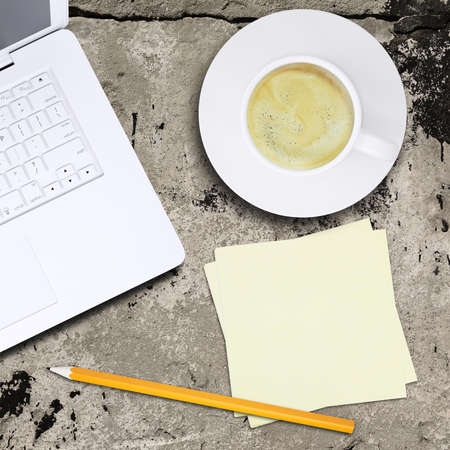Understanding the Importance of Seasonal Attire
When it comes to job interviews in the United States, first impressions are everything. Your appearance is one of the very first things an interviewer will notice, and dressing appropriately for the season can make a significant difference in how you are perceived. American workplaces value professionalism, adaptability, and attention to detail—qualities that can be demonstrated through your choice of interview attire. Wearing seasonally-appropriate clothing shows that you are aware of your environment and considerate of both comfort and social norms. For example, arriving in a heavy wool suit during a summer heatwave or wearing lightweight linens in freezing winter temperatures may signal a lack of preparation or understanding of professional expectations. By aligning your wardrobe with the current weather, you communicate respect for both the company and yourself, helping to establish credibility from the moment you walk in. Ultimately, mastering seasonal style is not just about looking good—it’s about setting the tone for a successful interview by demonstrating your awareness and professionalism in an American context.
2. Spring Style Tips: Balancing Professionalism and Weather
Spring job interviews in the United States often bring unpredictable temperatures and sudden rain showers, making outfit planning a bit tricky. The key is to balance professionalism with comfort and practicality. Here are some practical tips for dressing appropriately during the American spring season.
Choosing Versatile Layers
Layering is essential for spring interviews. Start with a breathable, professional base like a cotton blouse or dress shirt. Add a lightweight blazer or cardigan that can be easily removed if the weather warms up. Avoid heavy fabrics, as they may cause discomfort if the day becomes unexpectedly warm.
Recommended Spring Interview Outfit Components
| Item | Purpose | Notes |
|---|---|---|
| Base Layer (shirt/blouse) | Professional foundation | Opt for breathable materials like cotton or moisture-wicking blends |
| Blazer/Cardigan | Added professionalism and warmth | Choose light colors and avoid bulky styles |
| Trousers/Skirt | Appropriate bottom wear | Avoid heavy wool; go for lighter fabrics like twill or polyester blends |
Dressing for Rainy Days
Rain is common in many parts of the U.S. during spring. Consider bringing an umbrella in a neutral color to maintain a polished look. Choose water-resistant shoes such as loafers or simple ankle boots instead of open-toed options. If you need a raincoat, select one in a classic cut and subdued color to keep your outfit looking interview-ready.
Packing Essentials for Spring Interviews
- Compact umbrella (black, navy, or gray)
- Water-resistant footwear with clean lines
- Light scarf for unexpected chills
Final Thoughts
Dressing for spring interviews in America means preparing for fluctuating weather while maintaining a professional image. Prioritize versatile layers, appropriate fabrics, and subtle weatherproof accessories to ensure you arrive comfortable and confident—no matter what the forecast brings.

3. Nailing the Summer Interview Look
Guidelines for Staying Cool and Polished
Job interviews during the peak of summer can be challenging, especially when you want to make a strong first impression without breaking a sweat—literally. The key is to look professional while staying cool and comfortable in hot, humid weather.
Choose Breathable Fabrics
When temperatures soar, fabric selection becomes crucial. Opt for lightweight, natural fibers such as cotton, linen, or blends that include these materials. These fabrics allow your skin to breathe and help wick moisture away from your body. Avoid heavy wools or synthetic materials, which tend to trap heat and increase perspiration.
Stick to Light Colors and Layers
Lighter shades like pale blue, soft gray, or classic white not only reflect sunlight but also create a crisp, clean look that’s perfect for summer interviews. Consider layering with a thin blazer or cardigan that you can remove if needed—just make sure your base layer remains interview-appropriate if you need to take off the outer piece.
Managing Sweat in a Formal Setting
Keeping sweat at bay starts before you leave home. Use an antiperspirant deodorant and bring blotting papers or a handkerchief for quick touch-ups before entering the building. Choose moisture-wicking undershirts for men, and breathable camisoles or slips for women, to help absorb any excess perspiration. When possible, arrive early to give yourself time to cool down in an air-conditioned lobby or restroom.
Accessories and Footwear Tips
Keep accessories minimal to avoid feeling weighed down. Closed-toe shoes remain standard for most industries; however, opt for breathable materials like leather or canvas instead of synthetic options. For both men and women, no-show socks can help keep feet dry without sacrificing professionalism.
Dressing smartly for summer interviews in the U.S. means balancing comfort with a polished appearance. Thoughtful choices in fabric, color, and preparation will help you stay confident—and sweat-free—as you walk into your next opportunity.
4. Autumn Attire: Transitioning with Layers
As fall arrives, job seekers in the U.S. need to adapt their interview wardrobe to accommodate dropping temperatures and unpredictable weather. The key to mastering autumn interview attire is strategic layering, which allows you to stay comfortable while maintaining a polished and professional appearance regardless of sudden temperature shifts.
Strategies for Effective Layering
Layering not only adds versatility but also gives you the flexibility to adjust your outfit as needed throughout the day. Here are practical strategies for layering in a way that keeps your look sharp:
- Start with a base layer: Choose a crisp button-down shirt or blouse made from breathable fabric like cotton or a lightweight knit.
- Add a middle layer: A tailored cardigan, vest, or lightweight sweater provides warmth without bulk and can be easily removed if you get too warm.
- Finish with an outer layer: Opt for a structured blazer or jacket in a neutral color for a professional touch. In areas prone to rain, consider a trench coat or water-resistant jacket for your commute.
Selecting Season-Appropriate Colors
The colors you wear can subtly communicate professionalism and awareness of seasonal trends. Autumn is ideal for incorporating richer, deeper tones into your interview wardrobe. Consider the following color palette for a sophisticated and seasonally appropriate look:
| Color Family | Examples | Professional Impression |
|---|---|---|
| Earth Tones | Olive, Camel, Taupe | Warm, approachable, grounded |
| Deep Neutrals | Burgundy, Navy, Charcoal | Confident, reliable, classic |
| Muted Jewel Tones | Moss Green, Mustard, Plum | Creative yet composed |
Additional Tips for Autumn Interviews
- Shoes: Closed-toe dress shoes or ankle boots are ideal for chilly mornings and rainy afternoons.
- Accessories: Scarves in subtle patterns or solid colors add both warmth and style but should not overpower your outfit.
- Avoid heavy outerwear: Leave bulky coats at reception to ensure your layered ensemble remains the focus during the interview.
Dressing thoughtfully for autumn interviews not only demonstrates professionalism but also shows that you are attentive to details—an attribute valued by American employers. By mastering layers and choosing appropriate seasonal colors, you’ll feel confident and prepared no matter how unpredictable the fall weather may be.
5. Winter Essentials for Job Interviews
Tips for Staying Warm Without Sacrificing Style
Dressing for a winter job interview in the U.S. requires a balance between professionalism and practicality. Choose layers that provide insulation without bulk, such as a well-fitted wool sweater under your blazer or a thermal undershirt. Neutral colors like navy, charcoal, or camel keep your look polished and season-appropriate. Avoid oversized scarves or hats during the actual interview—opt instead for sleek, functional accessories that you can easily remove upon arrival.
Incorporating Outerwear
Your outerwear is often the first impression you make in colder months. Invest in a tailored coat, such as a classic pea coat or a structured trench, in a muted tone that complements your interview attire. Make sure your coat is clean and free of visible wear. If your region experiences heavy snow or rain, consider water-resistant fabrics to keep you dry while maintaining a sharp appearance. Remember to remove your outerwear immediately upon entering the building to present yourself professionally.
Choosing Appropriate Footwear for Snowy or Wet Conditions
Shoes can make or break your winter interview outfit, especially when facing snow or slush. Opt for waterproof leather boots with non-slip soles to ensure safety and comfort during your commute. Select styles with minimal embellishments and in classic shades like black or brown to maintain a formal look. Carry a pair of clean dress shoes in your bag if you expect inclement weather, and change into them before meeting your interviewer to avoid bringing moisture indoors.
Additional Tips
- Keep gloves simple and professional—black leather is always a safe bet.
- Avoid bright-colored umbrellas; choose something neutral and compact.
- Make sure all winter accessories are free from logos and distracting patterns.
Summary
Winter interviews demand thoughtful preparation, but with careful layering, smart outerwear choices, and weather-appropriate footwear, you can stay warm while presenting your best professional self regardless of the forecast.
6. Regional Climate Considerations in the U.S.
When preparing for a job interview, it’s important to recognize that weather and climate can vary dramatically across different parts of the United States. Understanding these regional differences not only helps you stay comfortable but also shows your attention to detail—a quality many employers value. In the rainy Pacific Northwest, such as Seattle or Portland, interviewees should consider water-resistant outerwear and footwear. Opt for sleek trench coats or professional rain jackets, and carry a compact umbrella to avoid arriving drenched. Meanwhile, in the chilly Northeast, especially during winter months, layering is key. Choose a tailored wool coat over your suit or business attire, and wear insulated but polished footwear to navigate icy sidewalks. In contrast, the hot and humid Southeast calls for breathable fabrics like cotton or linen and lighter colors that reflect sunlight while still adhering to professional standards. Out West, areas like California can range from foggy mornings in San Francisco to dry heat in Los Angeles; dressing in adaptable layers allows you to adjust as temperatures shift throughout the day. Regardless of region, always check the local forecast before your interview and select attire that balances professionalism with practicality. By accounting for local climate conditions, you’ll present yourself as prepared, adaptable, and ready to tackle any workplace challenge—qualities that resonate with hiring managers nationwide.


